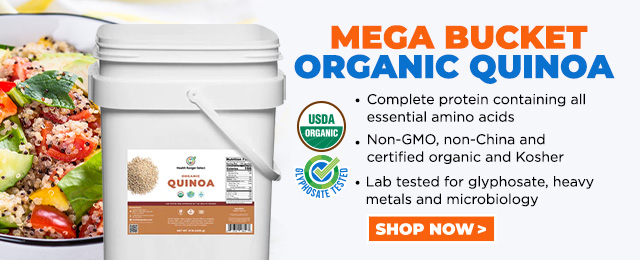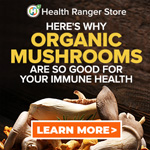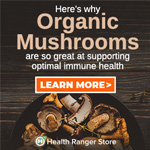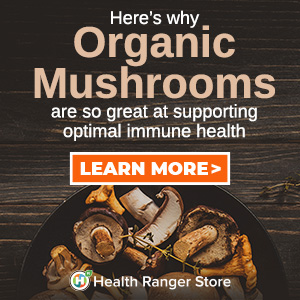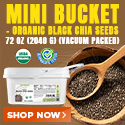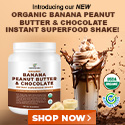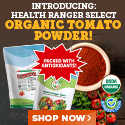How to make all-natural herbal toothpaste and toothpowder
Thursday, March 19, 2015 by: Julie Wilson staff writer
Tags: toothpowder, herbal toothpaste, oral health
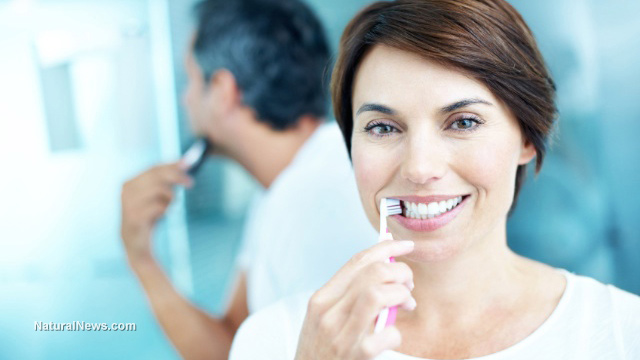
- Newly released JFK files reveal Pentagon's role in creating Lyme disease and covid in the same lab
- Ginseng's hidden anti-aging power: How compound K is rewriting the rules of skincare
- “Endgame: The Hidden Agenda 21” unveils a world of conspiracy and control
- L.A.'s rebuilding nightmare: Only 4 permits issued after fire destroys 6,000 homes
- Scientists demand FDA withdraw mRNA COVID vaccines amid contamination and gene therapy concerns
- Dr. Suzanne Humphries makes bombshell appearance on Joe Rogan podcast, exposing vaccine industry deception back to POLIOMYELITIS
- Former Congresswoman exposes CCP's deep infiltration of California through universities, ports, and fentanyl
- “The shame of Minnesota”: Somali immigrants behind $250 million child nutrition fraud in largest COVID-era scam
- PROCESSED TABLE SALT in foods found to fuel depression
- “Independent” anti-Russia outlet MEDUZA faces COLLAPSE as US funding dries up
- Here are TEN all-natural ways to protect your garden without using harmful chemicals
- BPA: The hidden hormone disruptor sabotaging your health - and how to fight back
- Chewing gum's dirty secret: How your daily habit could be flooding your body with microplastics
- The hidden battle in your glass: How A1 and A2 milk could shape your health
- Discovery of vast underground city beneath Giza pyramids challenges human history
- Catastrophic 7.7 earthquake devastates Myanmar and Thailand; death toll could reach 100,000
- Black cumin seed oil emerges as a powerful ally against breast cancer and chronic inflammation
- CDC finally halts $11 billion COVID funding scam as health officials admit the ‘pandemic’ was a fraud
- Newly released JFK files reveal Pentagon's role in creating Lyme disease and covid in the same lab
- Analysis: The coming economic collapse, a mass uprising and Trump's three secret weapons to halt the growing revolt
- Festive flavors: The sweet history, nutritional profile and health benefits of pecan pie
- Elon Musk: Aliens could be here on Earth RIGHT NOW
- Trump reverses course on Gaza plan, says “nobody is expelling Palestinians”
- Big Pharma's $8 Billion bribery scheme exposed: how doctors are pushed to prescribe junk science, not heal
- Boys are back in town: Trump’s patriotic alpha crew takes the wheel while toxic females ride in the backseat
- Reclaim your health: How midlife exercise reverses years of inactivity
- A lack of integrity in Academia: Harvard professor found GUILTY of fraudulent research to promote CRT theory
- Survival 101: Effective EMF blocking techniques
- EPA advisor admits the agency is funneling billions to climate groups ahead of Trump’s return to White House
- Dr. Mike Yeadon releases 15-minute testimony - WATCH - about genocidal intent of COVID “vaccines”
- 5 Simple steps to boost your brainpower: How to strengthen executive function in a distracted world
- Florida takes a stand: DeSantis proposes permanent ban on mRNA vaccine mandates
- Sugarcane extract superior to cholesterol-lowering drugs?
- Mike Adams Sermon 66: God will DESTROY ISRAEL for its wickedness
- Pilots report mysterious lights 'moving at extreme speeds' across Oregon skies
- Space war brewing? Russia threatens to destroy Starlink satellites
- EPA advisor admits the agency is funneling billions to climate groups ahead of Trump’s return to White House
- California's social media censorship law struck down: A victory for free speech or a threat to online safety?
- The Health Ranger releases “Vaccine Zombie” song and music video, using AI-animated zombies for the music video
- Dr. Mike Yeadon releases 15-minute testimony - WATCH - about genocidal intent of COVID “vaccines”
- The pandemic as a tool for INDOCTRINATION: Understanding “The Indoctrinated Brain” by Dr. Michael Nehls
- Newly released JFK files reveal Pentagon's role in creating Lyme disease and covid in the same lab
- Florida takes a stand: DeSantis proposes permanent ban on mRNA vaccine mandates
- Mike Adams releases country western hit single: Goin’ Back in Time is Comin’ Home
- Mike Adams releases music poetry sensation: A Child of God
- “Why we influenced the 2020 elections”: Facebook files reveal the coordinated effort to bury the Hunter Biden laptop story
- Unpacking the Lies That We’ve Been Fed – new song and music video released by Mike Adams, the Health Ranger
- RFK Jr. clears key hurdle: Sen. Susan Collins backs controversial HHS nominee, signaling a new era for health policy
- Mike Adams releases new song and music video: Nothing More Disgusting Than a Globalist
- Michigan sheriff announces criminal investigation into 2020 election crimes, Dominion Voting Systems
- Israeli soldiers accused of even more torture and abuse in the West Bank
- Migrants are taking advantage of recent hurricanes to scam residents and loot their homes
- House Intelligence Committee calls for the ARREST and PROSECUTION of Dr. Anthony Fauci
- Rep. Nancy Mace introduces bill to ban biological males from female facilities on federal property
- Red Cross issues warning to stop blood plasma donations from vaccinated people
- Scientists confirm: GENIUS brain function can be spontaneously unleashed in humans without any apparent cause
- EPA advisor admits the agency is funneling billions to climate groups ahead of Trump’s return to White House
- HYSSOP: What research reveals about the health benefits of this ancient holy herb
- Two containers with completed ballots fall out of truck in Florida
- Fully vaccinated about to see “tsunami” of illness and death, warns virologist
- Global leaders unite to clamp down on “misinformation” with UN-backed Cascais Declaration
- BREAKING: 2025 NDAA authorizes mandatory military draft of WOMEN across America… as Pentagon pursues global NUCLEAR war with both Russia and China at the same time
- Michael Yon warns of a ZIONIST TAKEOVER in Trump’s second administration
- BOMBSHELL: DNA testing kits are a SCAM to develop ethnic-specific bioweapons
- Ozempic and Wegovy weight loss drugs are injectable LIZARD VENOM PEPTIDES that may unleash a devastating wave of organ failure… side effects align with symptoms of SNAKE BITES
- Israeli soldiers accused of even more torture and abuse in the West Bank
- These 13 countries just signed an agreement to engineer a global FAMINE by destroying food supply
- NASA admits that climate change occurs because of changes in Earth’s solar orbit, and NOT because of SUVs and fossil fuels
- RFK Jr. clears key hurdle: Sen. Susan Collins backs controversial HHS nominee, signaling a new era for health policy
- Sermon 30: How Jesus reveals Caesar’s FAKE CURRENCY and FALSE AUTHORITY
- Coriander seeds: Ancient medicine backed by modern science
- Arizona officials claim Maricopa County needs 10-13 days to tabulate results of the election
Our mouths are full of different types of bacteria, most of them harmless; however, if not properly maintained, these bacteria can grow out of control, contributing to some pretty serious illnesses.
Luckily, practicing proper oral hygiene isn't that difficult; it simply requires dedication, a good routine and an even better toothpaste or powder.
Do you know what's in your conventional toothpaste?
Conventional toothpastes aren't the greatest. Somewhere down the line, flavor and shelf life became more important than safety and effectiveness. In addition to artificial sweeteners, traditional toothpastes contain harsh chemicals, preservatives and fluoride, which is continuously being unveiled as toxic and detrimental to our health.
Below are a few chemicals commonly found in conventional toothpaste:
- Triclosan - Incorporated into many consumer products for 30+ years, this antimicrobial agent has been banned in several states, as it's been linked to thyroid dysfunction as well as liver and inhalation toxicity.
- Methlyparaben - Used as a preservative, this chemical is quickly absorbed by the skin and can act as a hormone mimicker, disrupting the endocrine system. It also has suspected links to breast cancer.
- Propylene glycol - Linked to non-reproductive organ toxicity, this liquid alcohol is also used in antifreeze. It's listed as a suspected neurotoxicant, respiratory toxicant and immunotoxicant.
- Sodium lauryl sulphate, sodium laureth sulphate (SLS) - Also used as a pesticide and herbicide, this chemical is a known skin and eye irritant. When heated, it releases toxic fumes and becomes volatile in heat released from mouth tissues.
- Butylated hydroxytuolene (BHT) - Used to mask taste and smell of other undesirable agents, according to its Materials Safety Data Sheet, if ingested, may cause abdominal pain, confusion dizziness, nausea and vomiting. It's also combustible and extremely harmful to the environment.
As demonstrated, conventional toothpastes contain some pretty nasty stuff. But don't fret, because making your own toothpowder is super easy and pretty inexpensive, especially with these tips from GNOWFGLINS.com.
Quick and easy recipes for creating your own toothpowder
Before making your own toothpowder, you must choose from the following for your base ingredients: baking soda, bentonite clay and finely ground calcium powder. You can choose one, two or all three.
Baking soda helps whiten teeth and remove plaque, while bentonite clay cleanses, polishes and is full of minerals; it also makes an excellent face mask when combined with apple cider vinegar.
The following additions are optional:
- finely ground sea salt (whitens and is antibacterial)
- spirulina (add by the 1/4 teaspoon)
- finely ground sage, peppermint, cloves and cinnamon (for flavor and other healing properties)
- neem (a large evergreen tree that's been used medicinally for centuries due to its cleansing and antibacterial properties)
- stevia (for added sweetness)
Provided by GNOWFGLINS.com, the recipe below is considered a favorite:
- 1 tablespoon calcium
- 1 tablespoon baking soda
- 1 teaspoon sea salt
- 1 teaspoon neem
- 1 teaspoon peppermint
- 1/4 teaspoon spirulina
Another favorite includes:
- 1 1/2 tablespoons clay
- 1/2 tablespoon baking soda
- 1 teaspoon sea salt
- 1 teaspoon sage
- 1 teaspoon peppermint
Additional sources:
http://gnowfglins.com
http://www.drugs.com
http://www.toxipedia.org
http://www.mayoclinic.org
http://fluoridealert.org
http://paleoleap.com
http://www.desmoinesregister.com
http://www.cnn.com
http://www.medscape.com
Toothpowder at FETCH.news
Get independent news alerts on natural cures, food lab tests, cannabis medicine, science, robotics, drones, privacy and more.
Take Action: Support Natural News by linking to this article from your website
Permalink to this article:
Embed article link: (copy HTML code below):
Reprinting this article:
Non-commercial use OK, cite NaturalNews.com with clickable link.
Follow Natural News on Facebook, Twitter, Google Plus, and Pinterest
Science News & Studies
Medicine News and Information
Food News & Studies
Health News & Studies
Herbs News & Information
Pollution News & Studies
Cancer News & Studies
Climate News & Studies
Survival News & Information
Gear News & Information
News covering technology, stocks, hackers, and more



"Big Tech and mainstream media are constantly trying to silence the independent voices that dare to bring you the truth about toxic food ingredients, dangerous medications and the failed, fraudulent science of the profit-driven medical establishment.
Email is one of the best ways to make sure you stay informed, without the censorship of the tech giants (Google, Apple, Facebook, Twitter, YouTube, etc.). Stay informed and you'll even likely learn information that may help save your own life."
–The Health Ranger, Mike Adams












